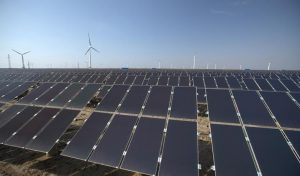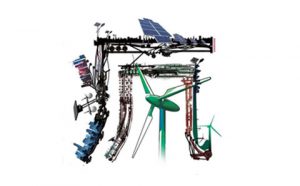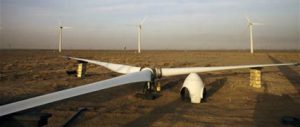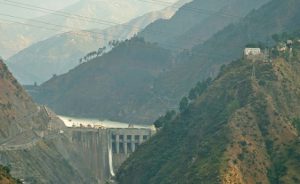For most observers of China’s renewable energy sector, flashy numbers are par for the course: China installed 15.9 gigawatts of wind power in 2012, bringing accumulated, grid-connected capacity to 61 gigawatts, and ranking the country the largest wind market in the world for the fourth successive year.
On the solar front, China’s leaders finally set the 2015 solar energy target at 21 gigawatts in the country’s 12th Five-Year Energy Plan, a more than four-fold jump from the original target. As if that’s not big enough, speculators are betting on a further increase to 35 gigawatts following hints in a speech given by Shi Lishan of the National Energy Administration’s (NEA) renewable energy department.
Beneath this impressive expansion in scale, however, another renewable revolution is quietly taking place.
Few have noticed, but China’s new leaders are taking steps to tackle problems seen in the first phase of the country’s clean energy development, namely major bottlenecks in connecting wind and solar farms to the grid. They are also pushing for a surge in small-scale renewable energy production, where ordinary people become suppliers to the grid.
Shifting wind policy
Efforts to review and adjust renewable energy development became visible towards the end of 2011 and increasingly evident in 2012. Starting in spring last year, a series of high-level interventions were made by the State Council and the National Development and Reform Commission (NDRC), China’s top economic planner.
Notably, Li Keqiang – then vice-premier, now premier – directly commented on problems surrounding connection of renewable energy to the grid. This hints at strong political determination to tackle the major bottlenecks of Chinese wind development, which have left turbines sitting idle as grid construction fails to keep pace with the boom in investment.
On August 13, then premier Wen Jiabao commented on the work of the State Grid Corporation of China (SGCC), the state-owned utility monopoly that is responsible for renewable energy connectivity problems. He congratulated and praised the company’s efforts to implement the government’s grid connection policy and help China become the country with the most wind power. This suggested the longtime deadlock between the grid and the renewable energy sector is loosening.
An interesting policy document followed swiftly on the heels of these comments. In September, the NEA released a notice on scaling up demonstration zones for distributed solar power, where electricity is generated by numerous small-scale sources. The notice invited each Chinese province to apply for no more than three demonstration zones with maximum installed capacity of 500 megawatts and said the priority would be given to eastern and middle regions, where local electricity demand is high. The outcome of this policy won’t become clear for some months, but it is by far the most ambitious drive for distributed solar power to date by the NEA, a longtime advocate of distributed energy.
Ambitions to increase China’s distributed solar energy production have long been stymied by onerous grid connection procedures, largely a result of the State Grid’s reluctance to assume its due responsibility and simplify the process. But the NEA’s move, requiring substantial cooperation from the grid, appeared confident, and expectation of more favorable policies mounted. Some industrial spectators even saw it as a potential breakthrough moment for the country’s struggling renewable industries.
The NEA’s confidence was quickly justified. On October 26, the State Grid released new guidance on solar energy grid connection, allowing distributed solar installations smaller than 6 megawatts to be connected to the grid with no extra infrastructure cost. This move – a complete u-turn on the previous position – lifted a major barrier for distributed solar deployment and was widely perceived as an important step towards unleashing China’s huge distributed solar potential.
Encouraging news was carried through to 2013 and culminated on February 27, when the State Grid announced it was expanding the scope of support to wind, gas, biomass and geothermal.
New era for Chinese renewable energy
All of these developments share something in common: they represent an integrated attempt to push China’s renewable energy development into a new phase – a phase where China takes stock after the rapid but problematic early development stage, addresses key problems such as grid connectivity and mainstreams the so far largely overlooked market for distributed renewable energy.
The recent policy changes signal a political awareness of the importance of these issues. If optimistically interpreted, they also point to a shift in mindset around China’s energy production and consumption. The best supporting evidence came in November 2012, in the report of the 18th National Congress of the Communist Party of China, where the top leaders called for a “revolution in energy production and consumption”. The wording shows a slight but significant deviation from the 12th Five-Year Plan, where “reform” is used instead of “revolution”.
This bold expression indicates the country is aiming for ambitious and fundamental change. Indeed, based on State Grid’s new policies, incentivised individuals can erect solar panels on the top of their houses and become energy producers. Given China’s estimated 316 million square metres of available roof space, perhaps “revolution” isn’t so far-fetched.
If the recent policy emphasis proves more than a flash in the pan, it may be reasonable to expect a mushrooming of small scale distributed renewable energy projects in the coming years. An energy future, where power is generated by individual households and surplus energy fed back to the grid, is possible to imagine.
Although each of these distributed installations is much smaller than concentrated wind or solar farms – which China has in abundance – an emphasis on this kind of power generation could gradually help China’s energy production move away from dirty coal, prompt smarter and more flexible grid and, by demonstrating feasibility, even influence overall planning for China’s energy future.
And it’s actually happening. Two months after the State Grid published its new guidance, the first distributed solar user in Qingdao, Shandong province, connected his project to the grid. Schemes such as Greenpeace’s 5-kilowatt pilot rooftop project in Beijing and elsewhere are quickly catching up. By February 2013, the State Grid had received more than 100 applications. The NEA and the State Grid now have a distributed solar target of 10 gigawatts by 2015.
Price guarantees for small-scale energy suppliers
Despite the positive signs, China is far from fulfilling its energy revolution fantasy. First, existing holes need to be plugged. Greenpeace’s China Wind Power Outlook 2012 calculates the wind curtailment rate – when turbines are shut down to deal with export problems to the grid for example – to be as high as 20% in some regions, resulting in power losses equivalent to 3.3 million tonnes of standard coal.
To tackle this, planning and coordination among various government bodies need to be strengthened. Meanwhile, a more robust regulatory framework and implementation and monitoring scheme are required.
Second, for emerging distributed renewable energy providers, grid connection problems can’t fully be resolved until relevant standards are released by the State Grid. More importantly, there is still no dedicated price mechanism for this sector. For every kilowatt hour (a unit of electricity) they generate, existing distributed solar projects only receive a benchmark coal power price of around 0.35 to 0.4 yuan – much lower than the 1 yuan seen by large-scale equivalents.
A document recently released by NDRC suggests policymakers are not currently considering setting a favorable price rate for individual energy producers, however. This runs in the opposite direction to recent progress seen in this area. At the very least, a Feed-in-Tariff, which guarantees a rate to renewable energy producers who export electricity to the grid and puts distributed projects on par with concentrated solar farms, is urgently required.
With these measures, China’s renewable energy sector could maintain its high speed growth at the same time as shifting into a healthier gear.





